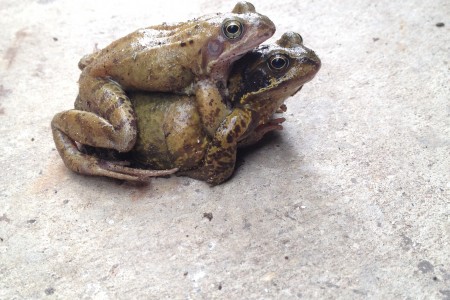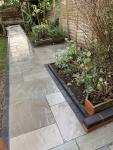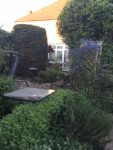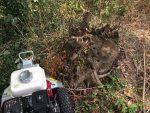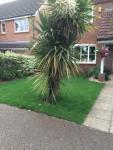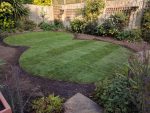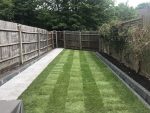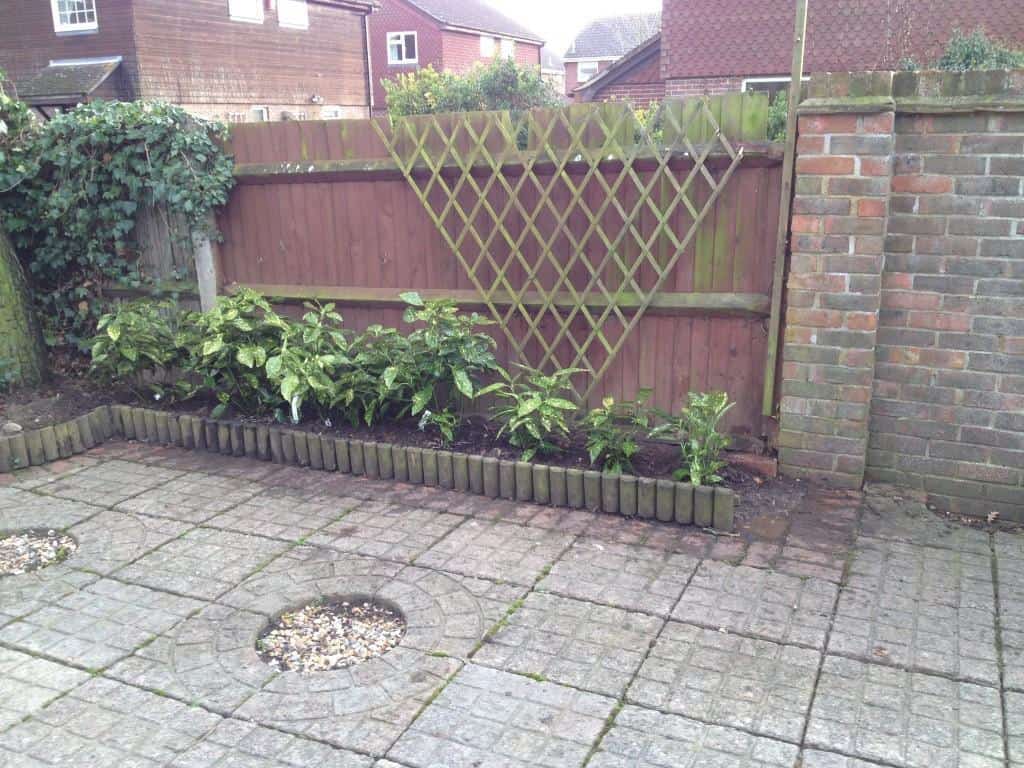
Mar 4, 2014 | Planting
Garden planting for this difficult space near a big oak tree
It’s a difficult small garden. There is a big oak tree which overshadows most of that space.
I believe good plants have been selected and it will make it look much more presentable and enjoyable. Here’s some photos of what it looked like before:
Raised beds did not impress, plants near the fence ( scotch broom, holly, rose ) did not thrive.
I have planted camelias in between 2 shrubs ( fatsia japonica, choicia and … who knows that one? ) Camelias do well in half shade or even full shade. Soil is also acidic so that’s a good combination for camelia.
I got rid of holly, rose, scotch broom and another shrub and planted a line of spotted laurels which will do very well in a shadow area.
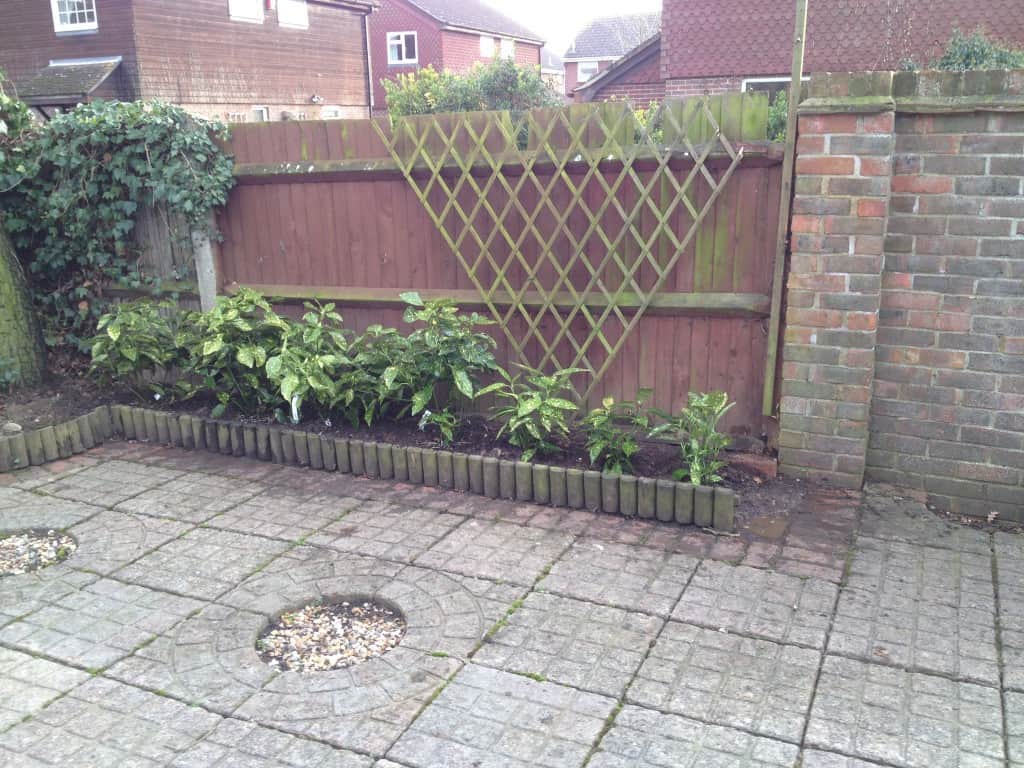
Raised beds have seen a total makeover.
Replanted with hypericum ( John’s Wart ) and Vinca ( periwinkle ) together with some other small ground covering plants.
Vinca can be invasive but in these raised beds can easily be managed or removed if needed.
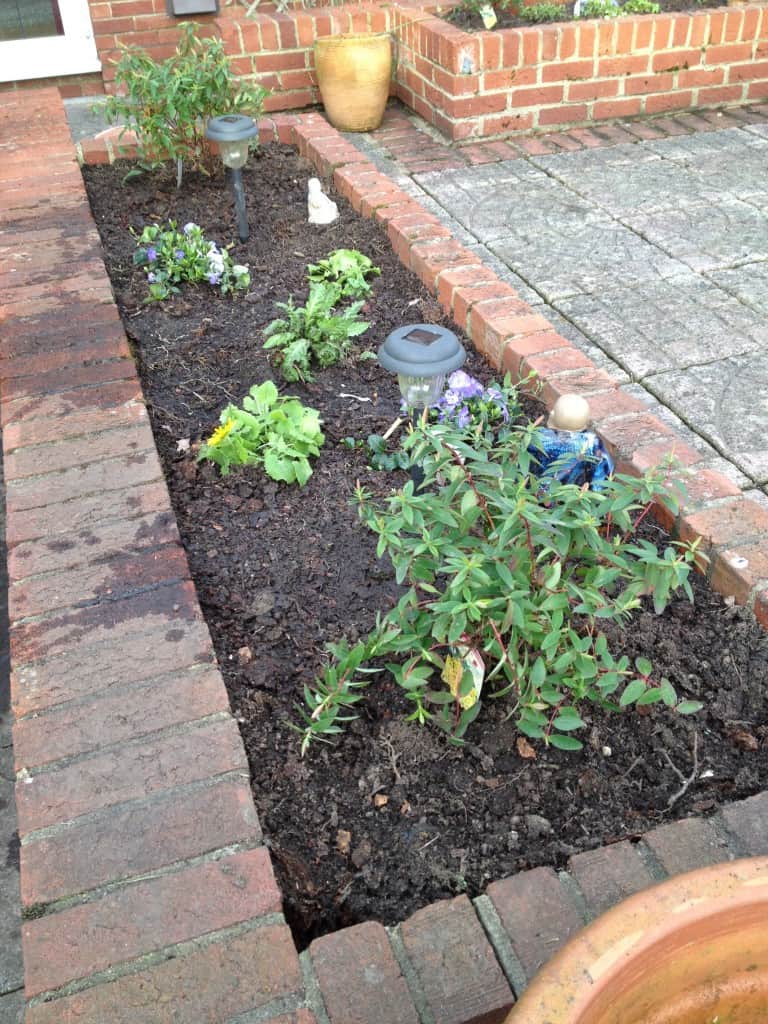
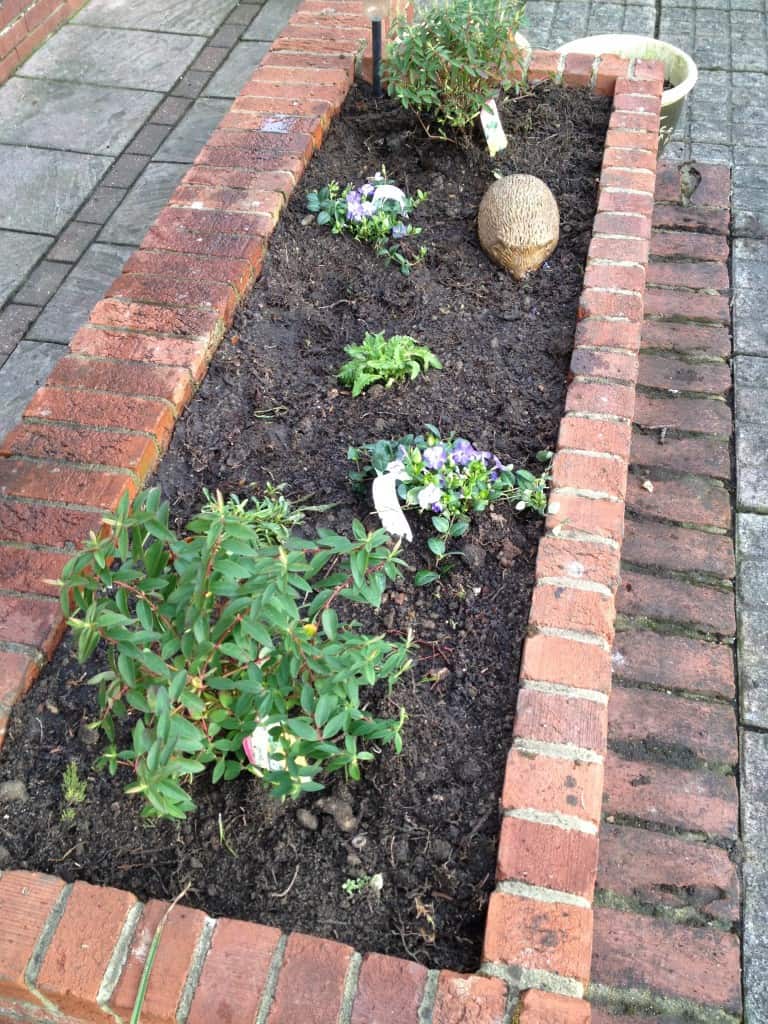
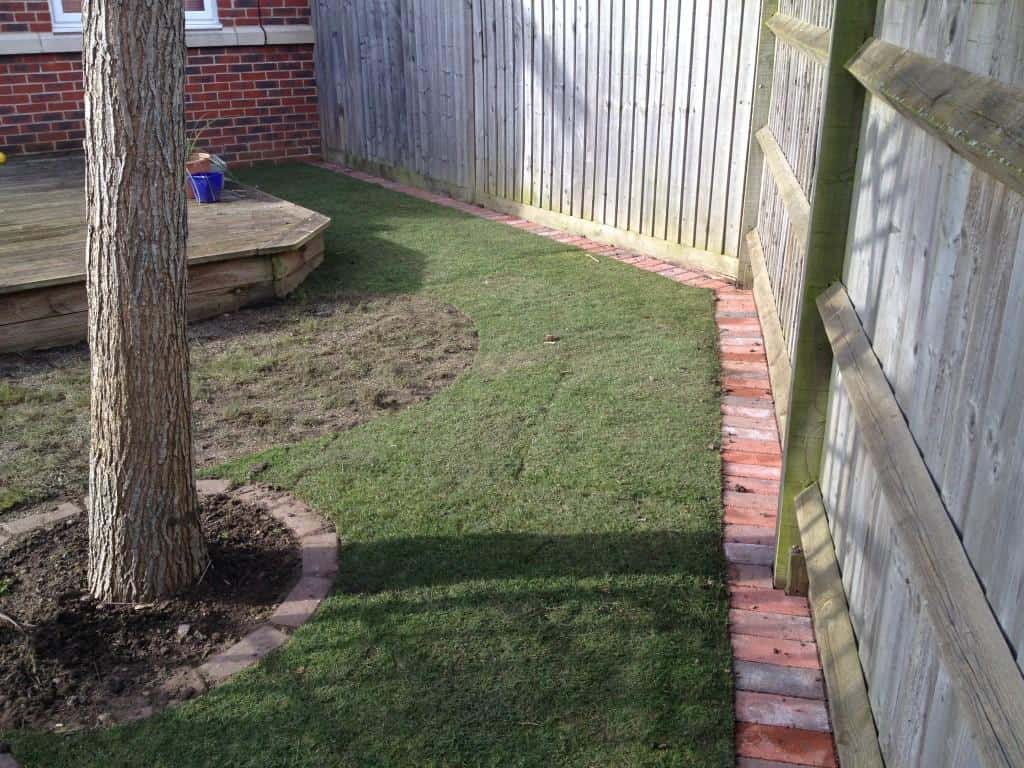
Feb 27, 2014 | Landscaping
Most of us have lawn in our gardens. Most have some sort of lawn mowing equipment at home as well, but how about lawn edging?
If you are thinking about having a new lawn then think how you are going to maintain it.
Mowing along the edges, fences, deckings etc is not that simple unless you took some care in designing your space.
Think about lawn edging. These can be your friend every time you go out to mow your lawn. Bricks or stones put down flush with the surface of the lawn make mowing a pleasure. You don’t have to strim the edges or do anything else apart from running the mower with one wheel on the edge.
Here’s some pictures of a returfed area together with a newly created lawn edge along the fence made with block paving bricks.
Few photos of another garden that had lawn edging done.
Before and after photos below
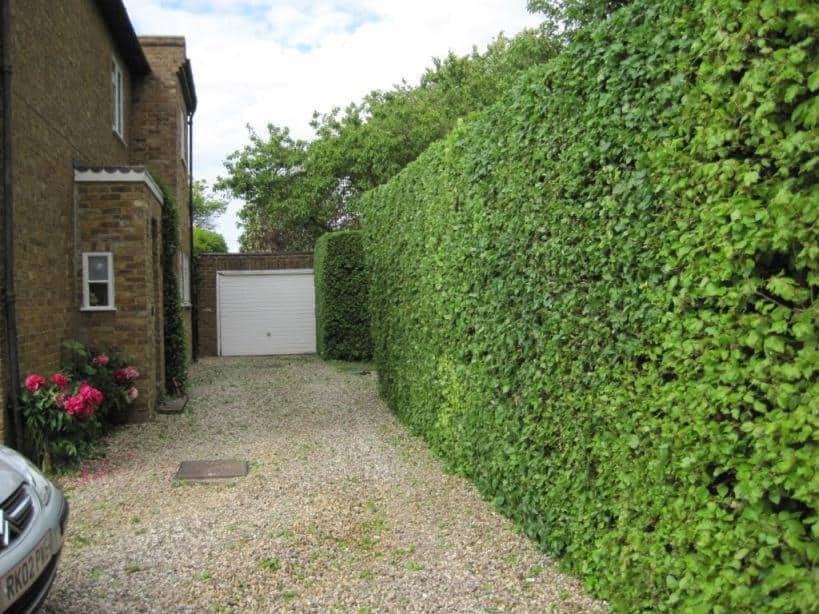
Feb 20, 2014 | News
When it comes to hedge maintenance, regular hedge cutting / trimming is the single most important thing to do. Regular hedge trim will make your hedge compact and thick right from the bottom.
Why plant a hedge?
Hedge can be a perfect garden boundary, but the wrong one may give you troubles.
- hedges provide shelter.
- They dumpen noises, reduce strong winds
- The obvious they give you privacy.
- security but not all hedges. Thorny, prickly varieties like for example:
Common holly
Firethorn
Blackthorn
Barberry
Buckthorn
- some hedging plants like photinia give you a beautiful seasonal change.
- hedge supports wildlife. Birds love nesting in them as well as eating some berries.
- unlike wooden fences, hedges won’t need replacing for many many years and they don’t require anything more than regular hedge cutting.
I can’t stress that too much.
Hedges need your commitment to regular hedge cutting / trimming.
All types of hedging need at least one hedge cut a year. Some varieties more than one.
A regular light prune is much better for you and your hedge then an occasional heavy cut.
Power tools do a quick job if done regularly. High and overgrown hedges often need costly specialist equipment or professional help
to get them back into shape.
You can avoid a lot of problems in future if you choose the right hedging plants for your boundary.
Hedge planting – the right choice.
The many benefits of growing hedges on your boundary depend on selecting the right plants for the situation. If you choose an unsuitable variety you could be faced with a range of problems, especially if the hedge grows too big. It will be difficult to trim and may cut out light to your garden or house.
- Its roots could deprive other plants of water and nutrients, and even interfere with paths and buildings.
- Oversize hedges will intrude on your garden space, and may cause problems with neighbours.
- Oversize hedges can be costly and time consuming to cut back and most conifers, including Leyland and Lawson’s cypress, will not tolerate hard pruning.
- If the hedge borders a road or path the local authority could get involved, and insist the hedge is cut back.
Luckily there is a wide range of plants available so it’s not difficult to achieve an attractive healthy hedge – one which will take only as much upkeep as you can manage, and create an attractive feature in your neighbourhood, not a bone of contention.
|
Growth rate |
hedge cutting – how often |
Size if unpruned |
Foliage |
Prickly? |
| Beech |
xxx |
Once |
Large tree |
D/LL |
No |
| Berberis |
xx |
Once |
Large shrub |
E |
Yes |
| Cherry laurel |
xx |
Once |
Large shrub |
E |
No |
| Cotoneaster |
xx |
Once |
Large shrub |
E |
No |
| Escallonia |
xx |
Twice |
Large shrub |
E |
No |
| Firethorn |
xx |
Twice |
Large shrub |
E |
Yes |
| Hawthorn |
xxx |
Twice |
Small tree |
D |
Yes |
| Hazel |
xxx |
Once |
Small tree |
D |
No |
| Holly |
x |
Once |
Small tree |
E |
Yes |
| Hornbeam |
xx |
Once |
Large tree |
D/LL |
No |
| Lawsons cypress |
xx |
Twice |
Large tree |
E Conifer |
No |
| Leyland cypress |
xxx |
Twice |
Large tree |
E Conifer |
No |
| Portugal laurel |
x |
Once |
Large shrub |
E |
No |
| Privet |
xx |
Three |
Large shrub |
E |
No |
| Rose |
xx |
Once |
Large shrub |
D |
Yes |
| Western red cedar |
xx |
Twice |
Large tree |
E Conifer |
No |
| Yew |
x |
Once |
Large tree |
E Conifer |
No |
Key:
Growth rate, for established plants
xxx – over 60cm/year
xx – 30-60cm/year
x – 15-30cm/year
Foliage:
D – deciduous
LL – dead leaves held in winter
E – evergreen
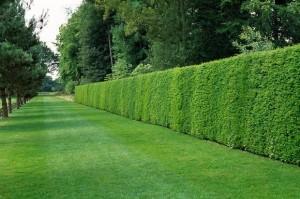
My favourite hedging plant has to be YEW ( taxus )
Classic choice but everlasting and makes an excellent hedge. Doesnt need that much hedge cutting either.
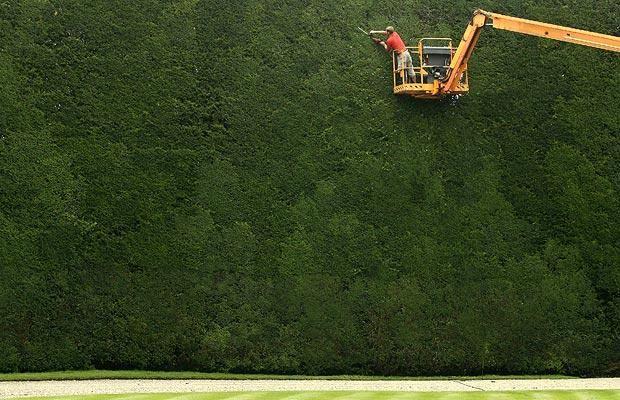
Tidy Gardens can trim/prune most of hedges, but if you are that lucky and have spectacular yew like on a picture above then DON’T call us. Call for a crane ! 🙂





